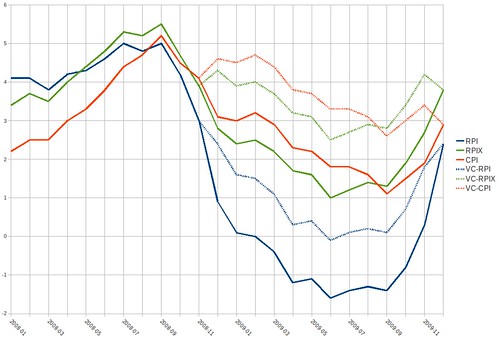Consumer Boomer |
| How to Invest When Interest Rates Expected to Rise Posted: 20 May 2010 06:33 AM PDT What goes down, must come up-eventually. Short term interest rates have been at historic lows for quite sometime, so it’s expected that rates should go up soon. But how soon? And when it does go up, what does that mean for your investment portfolio? When it comes to a rising interest rate environment, there are several things to consider. In addition, there are some types of bonds that are attractive in this type of market. If you haven’t visited your investments in a bit, shame on you. Let’s look at what you need to know about investing in an rising interest rate environment. Positioned for Rising RatesWhen interest rates go up, it has an inverse relationship with the face value of bonds. Translation: rates go up, your bonds go down. That’s why it’s imperative to not have bonds that have a lengthy maturity period. That being said if generating income is your priority, then you have no choice to have some of your money tied up in long term bonds since short term rates are so low. As interest rates start to rise, here are some general items that you need to be familiar with:
Types of Bonds You Should Own TodayInvesting in bonds right now has its pro and cons. While the money might be safe from the stock market, in a rising interest rate environment bonds could be just as volatile; especially if the bonds are too long term. Here’s the type of bonds that you want to have in your portfolio today. High-Yield Bonds (taxable and tax-free)High-yield is an obvious asset class for income seeking investors. Taxable high-yield bonds were one of the hardest hit sectors during the credit crunch, but have rebounded impressively since. Despite the stellar performance of these bonds, yield levels remain high and we believe there is additional room for improvement over the remainder of 2010. Default rates began to decline over the first quarter of 2010 for the first time since late 2007. More importantly, since 2010, Moody's has twice revised their year-end 2010 default rate forecast lower and the forecast currently calls for a 2.8% default rate by the end of December 2010. A projected decline in the default rate provides favorable backdrop for High-Yield-Bonds. Emerging Market DebtEmerging Market country economies weathered the financial crisis better than most developed countries. In terms of credit quality, with the exception of Fiji, no Asian emerging country experienced a downgrade in 2009. Investor interest in EMD has increased as the Greek situation has highlighted the rising debt burdens facing many developed European countries as well as the United States. Most EMD issuers have very manageable debt burdens and have continued to benefit from stronger domestic economic growth. Investment-Grade Corporate BondsInvestment-Grade Corporate Bonds remain attractive—despite lower yields—as an income-producing option in fixed income markets. This is especially true considering historically low Treasury and MBS yields. Given the prospect of massive Treasury issuance in 2010, corporate bond yield spreads could contract below the historical average. Even if spreads merely held stable the added yield advantage is significant. Preferred StocksPreferred Stocks provide higher current yields than comparably rated corporate bonds. Although called "stocks" preferred stocks have bond characteristics and income-seeking investors should consider the asset class. Like other credit sensitive sectors, Preferred Stocks followed up a strong 2009 rebound with an impressive start to 2010. Nonetheless, both yields and valuations remain attractive. Floating Rate Bank LoansCompanies rated below investment grade issue loans via banks (hence the name "Bank Loans") for their short-term funding needs. Most bank loans are senior secured debt, as the companies generally pledge specific tangible assets for the loan, ranking them above traditional bonds and equities in a corporation's capital structure. These securities typically pay a higher yield than short-term securities (generally 2.5 to 3.0% above LIBOR, London Inter-bank Offered Rate) and provide protection against rising interest rates since the interest rate on bank loans adjusts at regular intervals to reflect changes in a short-term rate, usually 3-month LIBOR. Unlike traditional fixed-rate bonds where rising interest rates hurt their prices, when rates rise, bank loans pay a higher rate and their prices do not necessarily fall. |
| You are subscribed to email updates from Consumer Boomer To stop receiving these emails, you may unsubscribe now. | Email delivery powered by Google |
| Google Inc., 20 West Kinzie, Chicago IL USA 60610 | |



No comments:
Post a Comment
Thank you for commenting on my blog. I will write back soon!